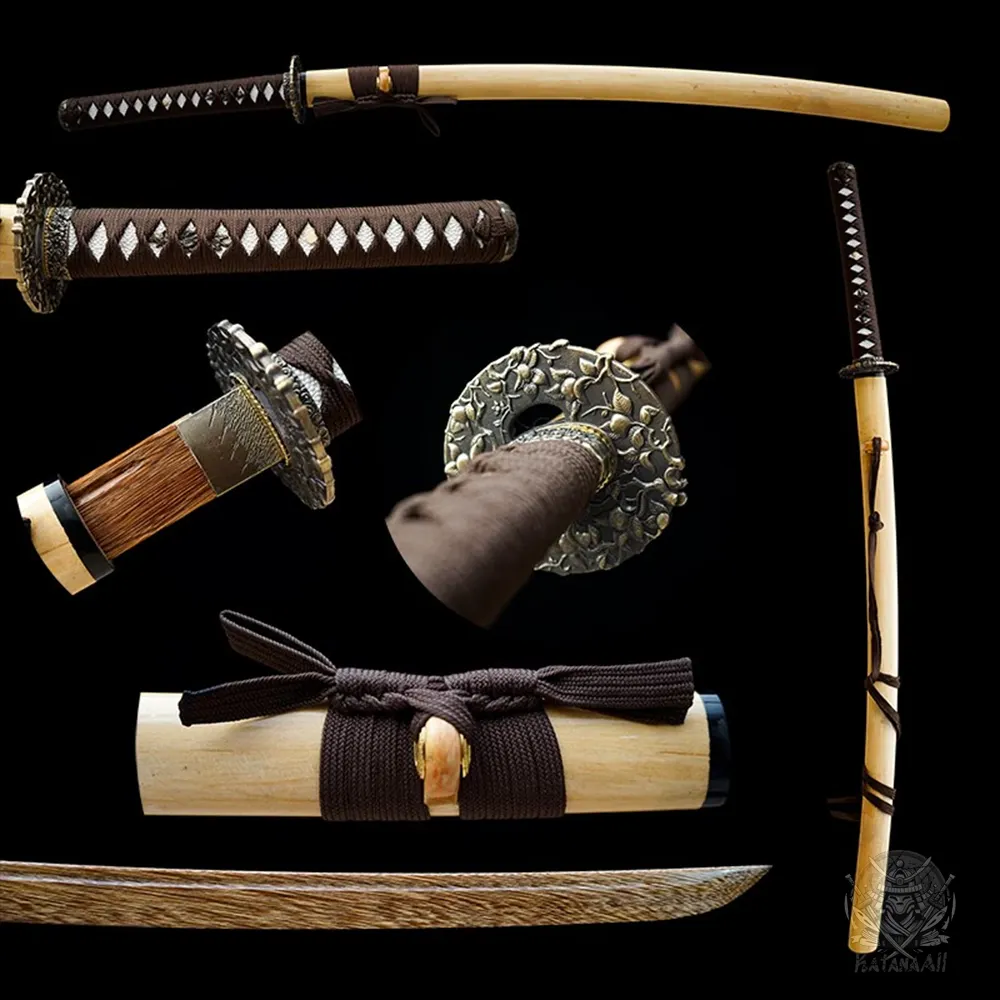
Designing a custom katana is a rewarding journey that combines artistry, tradition, and personal expression. Whether you’re a collector, martial artist, or enthusiast, a custom katana allows you to create a unique piece tailored to your preferences. This guide outlines the essential steps in designing a custom katana, from selecting materials to personalizing its aesthetics, ensuring your blade is both functional and meaningful.
1. Understand the Basics of a Katana
Before diving into the design process, it’s crucial to familiarize yourself with the katana’s components:
- Blade (Nagasa): The cutting edge of the sword, often crafted with a curved, single-edged design.
- Handle (Tsuka): Wrapped in ray skin and cord, the tsuka provides grip and balance.
- Guard (Tsuba): The handguard protects your hands and adds a decorative element.
- Scabbard (Saya): The sheath that houses the blade when not in use, often lacquered for durability and aesthetics.
- Fittings (Koshirae): Includes decorative elements like the pommel (Kashira), collar (Fuchi), and ornaments (Menuki).
Understanding these components helps you make informed decisions during the design process.
2. Choose the Blade Length and Geometry
The blade is the heart of the katana, and its design significantly impacts functionality and aesthetics.
- Length: Blade length should align with the user’s height and intended use. Martial artists may prefer a standard length of 27-29 inches, while collectors might opt for custom dimensions.
- Geometry: Blade shapes vary based on cutting performance and aesthetics. Common profiles include:
- Shinogi-Zukuri: The classic katana shape, ideal for cutting.
- Hira-Zukuri: A flat blade profile, often used for aesthetic or ceremonial purposes.
- Kissaki (Tip Design): Options like the elongated O-Kissaki or the shorter Ko-Kissaki can affect cutting precision and style.
3. Select the Steel Type
The type of steel determines the blade’s durability, sharpness, and flexibility. Traditional katanas use tamahagane, a type of high-carbon steel refined in Japanese tatara furnaces. Modern options include:
- High-Carbon Steel: Offers superior sharpness and edge retention.
- Spring Steel: Provides excellent flexibility and resistance to breaking.
- Stainless Steel: Suitable for decorative katanas, as it resists rust but lacks traditional forging qualities.
Consider your priorities—whether functionality or aesthetics—and select the steel accordingly.
4. Decide on the Tsuka (Handle) Design
The handle is not only functional but also a canvas for personalization.
- Core Material: Traditionally made of wood, the core must be sturdy yet lightweight.
- Wrapping (Tsuka-Ito): Silk, cotton, or leather wrappings add grip and texture. Colors and patterns can be customized to match your preferences.
- Ray Skin (Samegawa): Often white or dyed, ray skin enhances durability and aesthetics.
- Menuki (Ornaments): Small decorative pieces are placed under the wrapping to enhance grip and tell a story.
5. Choose the Tsuba (Guard) Design
The tsuba is both a functional and artistic element. Options include:
- Material: Common choices are iron, brass, or alloy. Precious metals like silver or gold can be used for luxury designs.
- Shape and Motif: Traditional designs often feature nature motifs, samurai symbols, or family crests. Custom engraving can reflect personal significance.
6. Customize the Saya (Scabbard)
The saya protects the blade and complements the overall design.
- Material: Wood is the traditional choice, often lacquered for durability.
- Finish: Glossy, matte, or textured finishes can be selected to match your aesthetic.
- Accessories: Add features like sageo (cord) for practical and decorative purposes.
7. Incorporate Personalization and Symbolism
A custom katana is a deeply personal creation, and symbolism plays a significant role in its design.
- Engravings (Horimono): Add kanji characters, family crests, or symbolic imagery to the blade.
- Theme: Choose a unifying theme, such as a historical period, mythological story, or nature elements.
- Colors: Use a consistent color palette across all components to tie the design together.
8. Collaborate with a Skilled Swordsmith
Crafting a katana requires expertise. Collaborate with a professional swordsmith or artisan who specializes in custom designs. Share your vision, provide sketches or reference images, and ensure they understand your preferences.
9. Consider Legal and Practical Factors
Owning a katana may be subject to legal restrictions depending on your location. Research local laws and ensure your custom design complies with regulations. Additionally, decide whether the katana is for display, martial arts, or ceremonial use, as this impacts material and design choices.
10. Finalize and Cherish Your Katana
Once your design is complete and the katana is forged, take steps to preserve its quality:
- Regularly clean and oil the blade to prevent rust.
- Display it securely using a katana stand or wall mount.
- Store it in a climate-controlled environment to maintain its condition.
Conclusion
Designing a custom katana is a journey that bridges tradition and individuality. By carefully selecting materials, geometry, and aesthetics, you can create a one-of-a-kind sword that reflects your personality and appreciation for craftsmanship. Whether it becomes a family heirloom, a functional tool, or a centerpiece for display, your custom katana will stand as a testament to the enduring legacy of Japanese sword-making.
